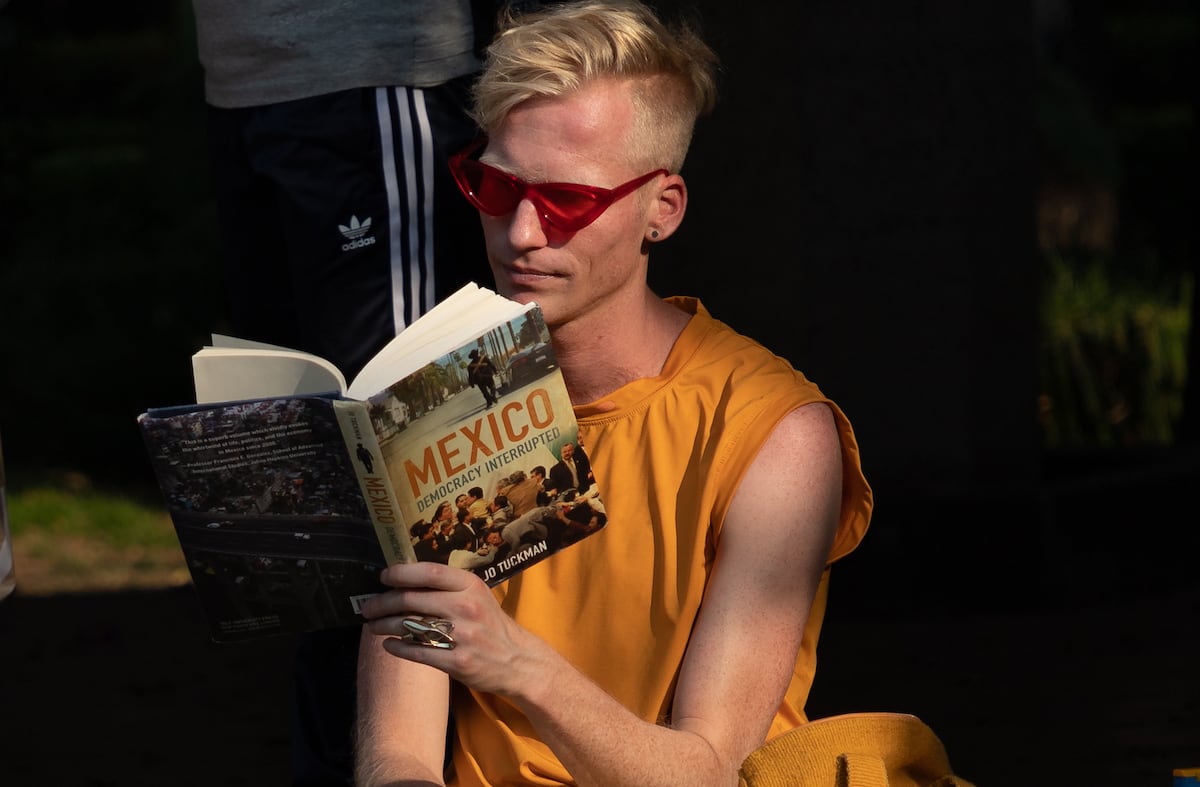‘Gringo go home’: Mexico City’s housing crisis precedes digital nomads
6 min read
“Gringo go home,” reads a huge graffiti in Roma, Mexico City’s trendy neighborhood that has become a mecca for short- and long-stay global tourism. “I wish someone nationalist would come along and introduce these little shits to their fate,” people comment on social media in response to a gringo inviting his compatriots to visit the capital. “I hate you fucking gringos,” others say succinctly.
In the collective imagination, gringos are the cause and reason for the rising cost of housing in Mexico City. And it is thought that expelling them represents an important part of the solution to the problem. But that is not so. The increase in housing prices in Mexico City precedes the gringos, it is happening all over the country and has causes that go beyond the arrival of tourists or digital nomads. Blaming the gringos for the problem absolves the real culprits.
The reality is that, with or without gringos, housing in Mexico has become enormously more expensive. From 2005 to 2021, prices throughout Mexico have increased by 247%. Even in states with low tourist flow, such as Morelos, prices have increased 193%, according to data from the Federal Mortgage Association. There is not a single state in Mexico where the price has not more than doubled during that period.
Moreover, in Mexico City, housing prices have not increased since digital nomadism became fashionable; on the contrary, they have gone down. Since the pandemic four years ago, housing prices in Mexico City have increased by 25%, which is less than what they had increased in the previous four years, when they rose by 44%. In fact, since the pandemic, prices in Mexico City have increased the second least in all of Mexico, behind only to Tlaxcala.
What we’ve observed is that the pandemic reduced the hike in housing prices that had been occurring in Mexico City, probably because Mexican workers are now able to telecommute from other states. Nationally, housing price trends have not changed before and after the pandemic, except in certain beach destinations like Nayarit, Los Cabos and Quintana Roo.
Therefore, blaming the gringos for Mexico City’s housing crisis is misguided. If housing is ridiculously expensive, it is because of different phenomena. The main reason is that there is not enough housing. The problem began in the early 2000s when housing construction was practically prohibited except in four mayoralties. At the time, the only housing policy that existed was the policy of expelling families to distant areas such as Chalco, Tecamac and Iztapaluca.
For a long time, Mexico City simply has not been building enough housing. Mexico’s Federal Mortgage Association (Sociedad Hipotecaria Federal) estimates that in order to meet the city’s normal housing needs, at least 11,000 additional homes a year would be required; other estimates put the figure at 50,000. But in 2023, only 1,701 homes were built in Mexico City; of those, only 12% were affordable housing, i.e. priced below $39,000 dollars.
The reason why only expensive housing is being built is builders can’t balance their numbers any other way. A construction project that takes two years must generate a profit of at least 23% to compete with what investors would get by keeping their money in government bonds. Thus, the problem is that it should be possible to build complete homes for less than $30,000.
Building housing for that amount is very difficult in Mexico for several reasons that have nothing to do with the gringos. Rather, they are related to Mexican monopolists, the government’s inability to tax the rich, and Mexico City’s government’s criminal lack of planning.
First, many production inputs are expensive because they are sold by companies with market power. For example, cement is much more expensive in Mexico than it is in other countries. Last year, CEMEX was the cement company that earned the most money in the world in the stock market. Its power is such that when it announces price increases, local governments have to reduce their public works budgets because they simply have no one else to buy from. In fact, several businessmen have tried to import cement from other countries to lower the price, but for one reason or another they always end up defeated by injunctions, lawsuits and embargoes.
The steel situation is not much different. According to Expansión magazine, in Mexico, there are at least 32 investigations into unfair trade practices by the National Chamber of Iron and Steel Industry. Nevertheless, the Ministry of Economy has created a 15% tariff to protect the industry from foreign competitors. The logic is to protect abusive Mexicans for the simple fact that they are not foreigners.
Second, another problem is the cost of construction permits and licenses. Developers recommend setting aside at least $59,000 for permits for each construction site. That makes them very expensive. Permits are so costly because municipalities use them as a cash box. It is easier and more discretionary to do it this way than to have the courage to increase the collection of other progressive taxes.
At its core, Mexico City’s government’s fascination with allowing thousands of Airbnb properties to exist is also a tax issue. Properties rented through Airbnb automatically pay taxes on the platform. Privately rented properties do not. Landlords often demand cash payments from their tenants. Thus, Airbnb has become an easy solution for Mexico City to collect taxes without having to confront a handful of tax-evaders who vote in elections.
Third, there is no central planning to create a truly livable city. One of the major reasons why Roma and Condesa are desirable areas is because they are walkable, tree-lined, park-like urban spaces. That is a way of life that the urban layout does not allow in other Mexico City neighborhoods.
There is an urgent need to create livable areas outside these neighborhoods. The government should expropriate unused land or land used as massive parking lots to turn them into parks instead. Every neighborhood should have a park, be reforested and have pedestrian streets. The utopias of Iztapalapa are a great example that it is possible. Spaces that were previously in disuse were converted into recreational areas in three years.
However, the government rarely creates public space but privatizes it instead. The Ministry of Finance and Public Credit, headed by Rogelio Ramirez de la O, is the perfect example. It has a luxury sports complex in Roma. The space — thousands of square meters in size — could be a public park that would change the lives of thousands of people or a public housing project. Instead, the federal government uses it as a private club with tennis courts for high-level bureaucrats.
The government should plan public spaces for the common good, but it simply does not do so. Mexico City’s 2016 constitution determined that there should be a general land-use plan and a development plan. However, the creation of both plans has been complicated by questioning from civil and neighborhood organizations that say they were not consulted. After strong criticism, Marí Batres, the head of Mexico City’s government, decided to withdraw the plans, claiming that a chapter on real estate corruption would be added. To date, this has not happened.
So, without such plans, the city grows where the developer buys land. Through corruption they manage to add floors, and they cover the city with concrete, not green areas.
In addition to planning, the government of Mexico City has much work to do. It must build public housing to rent at below-market prices, change land uses to densify with low-cost housing, and charge a prohibitive tax on anyone who has a vacant home. If you don’t live in it, you pay for it. Hoarding should be completely and absolutely prohibited.
Subscribe to the EL PAÍS Mexico newsletter and WhatsApp channel and receive all the latest news on current affairs in this country.



